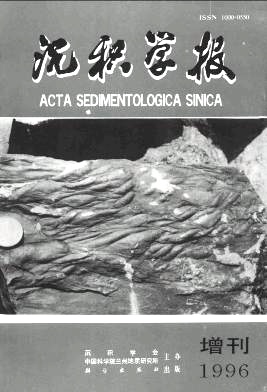Formation of Oils and Gases from the Massif-Trough Marginal Zone in Northwest China
- Received Date: 1996-01-29
- Publish Date: 1996-12-31
-
Key words:
- massif-trough /
- mountain-basin /
- marginal zone /
- complexes of petroleum formation /
- out generating-inner reserving
Abstract: The comprehensive studies on the sedimentary settings in the Jungger Basin, Tarim Basin and etc. show clearly that northwestern region of China was mainly marine sedimentary ronments, the basements of sedimentary basins were a number of ancient separated crystallinemassifs covered by sea water in the Palaeozoic, among which there were palaeo-ocean troughs or narrow palaereocean troughs. The marginal basins located along the trough between different massifs or the marginal zone between massifs and ocean troughs are favorable for oil andgas generation. DUring the mountain-building process with the compressional folding to the ocean trough, the ancient system of massif-trough transformed from the Palaeozoic marine environments to the Meso-Cenozoic continental sedimentary system of mountain-basin, during this time the ancient series of marine source rocks that deposited in the marginal basins were buried beneath the mountains around the basins, while oil and gas generating from the source rocks have partly migrated and accumulated into reservoir beds in the basins to form an oil and gaspool focalled the "out-generating and inner-reserving". Within this kind of basins, there coexist two series of source rocks: marine one and continental one, and two kinds of petroleum generating and reserving complexes: "inner generating-inner reserving" and "out generatinginner reserving". This new theory or model of petroleum formation and occurrence has been proved not only by the result of our recent petroleum geochemical research but also by the practice of exploration in some regions. The idea about petroleum generation from massiftrough's marginal zone has broken the traditional concept by which the formation and occurrence of the Palaeozoic petroleum only within modern basins, this could increase the potential of discovered petroleum resources and enlarge new fields for finding oils and gases in Northwest China.
| Citation: | Luo Binjie, Zheng Guodong, Yuan Jianying, Yang Xinhua, Duan Yi. Formation of Oils and Gases from the Massif-Trough Marginal Zone in Northwest China[J]. Acta Sedimentologica Sinica, 1996, 14(S1): 1-9. |






 DownLoad:
DownLoad: